If you want the most perfectly moist, flavorful, and juicy Thanksgiving Turkey, my dry brine turkey recipe is what you’re looking for. All you need to do is rub the turkey down with salt, seasonings, and fresh herbs. Then, place the turkey in the fridge and let the dry brine work its magic for the next 48 to 72 hours.
That’s all you need the prep you need to do, and you’re on your way to enjoying the best turkey you’ll ever eat!
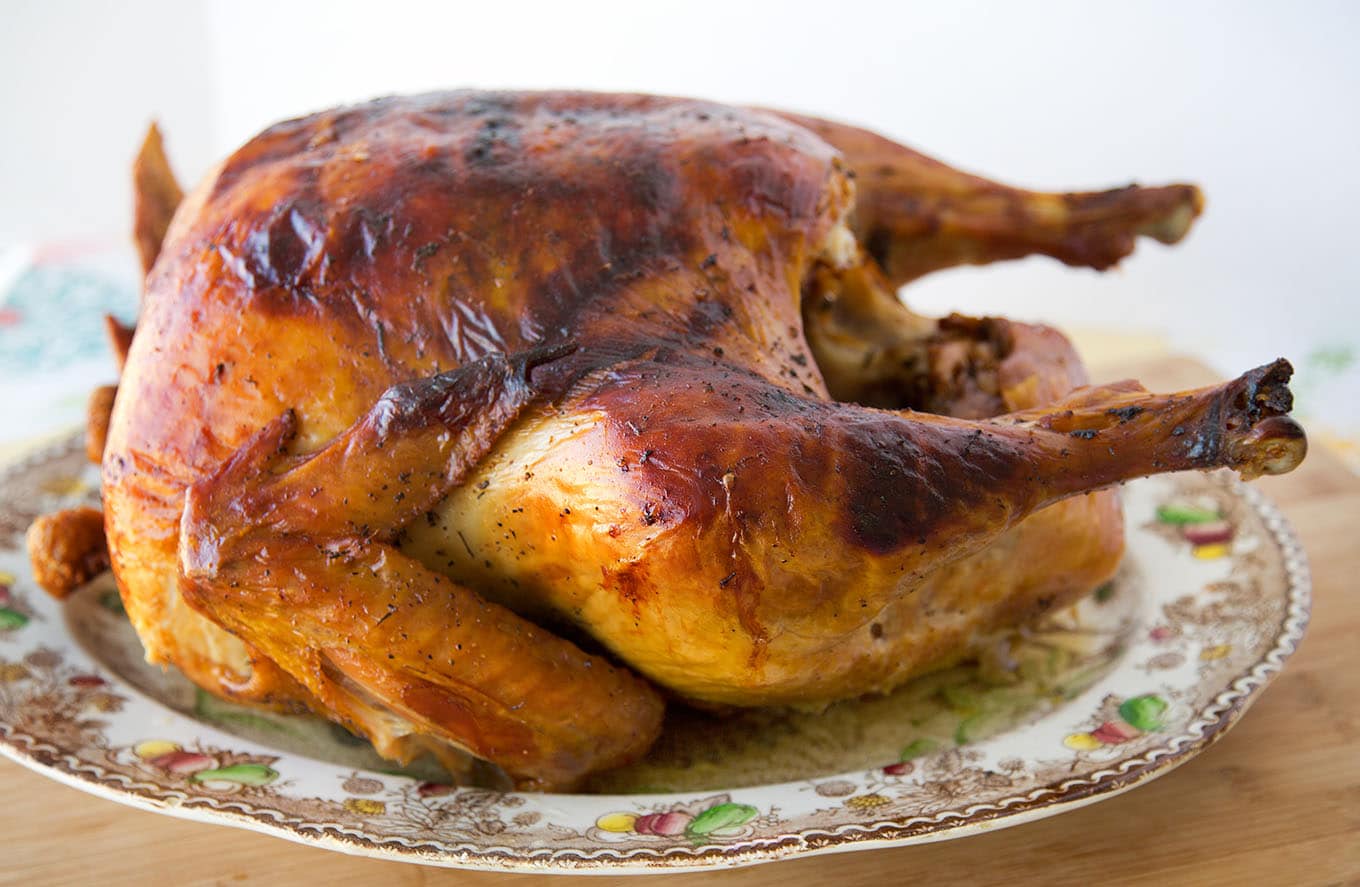
When it comes to cooking a turkey, what you do before it goes into your oven makes all the difference in the world.
Don’t be intimidated by the thought of cooking a turkey. Because I’m here to share my dry brining and roasting methods to make your holiday turkey the star of the holiday dinner
There are different thoughts on brining a turkey, with the choices being wet brine or dry brining. While both techniques will help you cook the most succulent turkey you’ve ever had, the smartest, easiest way to achieve the best results every time is with a dry brine.
It doesn’t matter if this is your first Thanksgiving dinner, my dry-brine method will make you look like a seasoned veteran of Thanksgiving and turn out an impeccably juicy, flavorful bird.
If you’re looking for a non-traditional dessert for the holidays, my Tiramisu will be the perfect ending to your holiday meal.
Ingredients
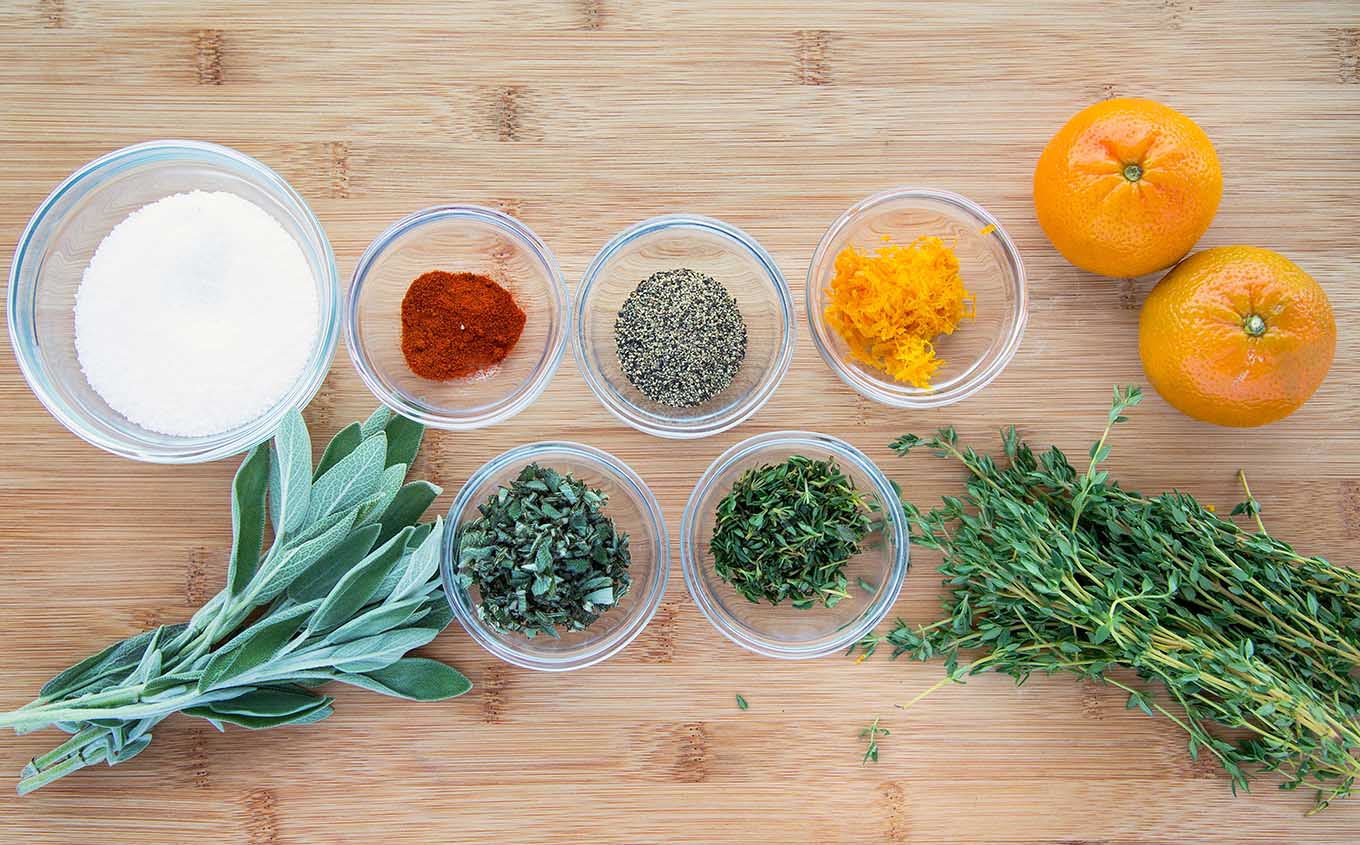
Let’s start by gathering the ingredients we need to dry brine our turkey. In Chef Speak, this is called the Mise en Place, which translates into Everything in its Place.
Not only does setting your ingredients up ahead of time speed the cooking process, but it also helps ensure you have everything you need to make the dish.
- Kosher Salt
- Black Pepper
- Smoked paprika
- Citrus zest
- Fresh thyme
- Fresh Sage
Do I have to use specific herbs and spices to dry brine a turkey?
That’s a tricky question because if you want a traditional Thanksgiving turkey, the answer is yes.
But If you like specific flavorings and aren’t into traditional Thanksgiving flavors, then by all means, have fun substituting spices that you like.
Recipes should be used as guidelines, and in all honesty, the salt is the only ingredient you really need for dry brining; the rest are added for flavor.
Why Should I dry-brine my turkey?
When you’re dealing with a large piece of meat like a whole turkey, it’s easy to overcook it into a dry, flavorless disaster. Dry Brining gives the dry brine mixture time to penetrate into the meat.
Dry brining (dry rub) is a way to inject both flavor and moisture into a turkey, giving you a flavorful, moist, roasted turkey.
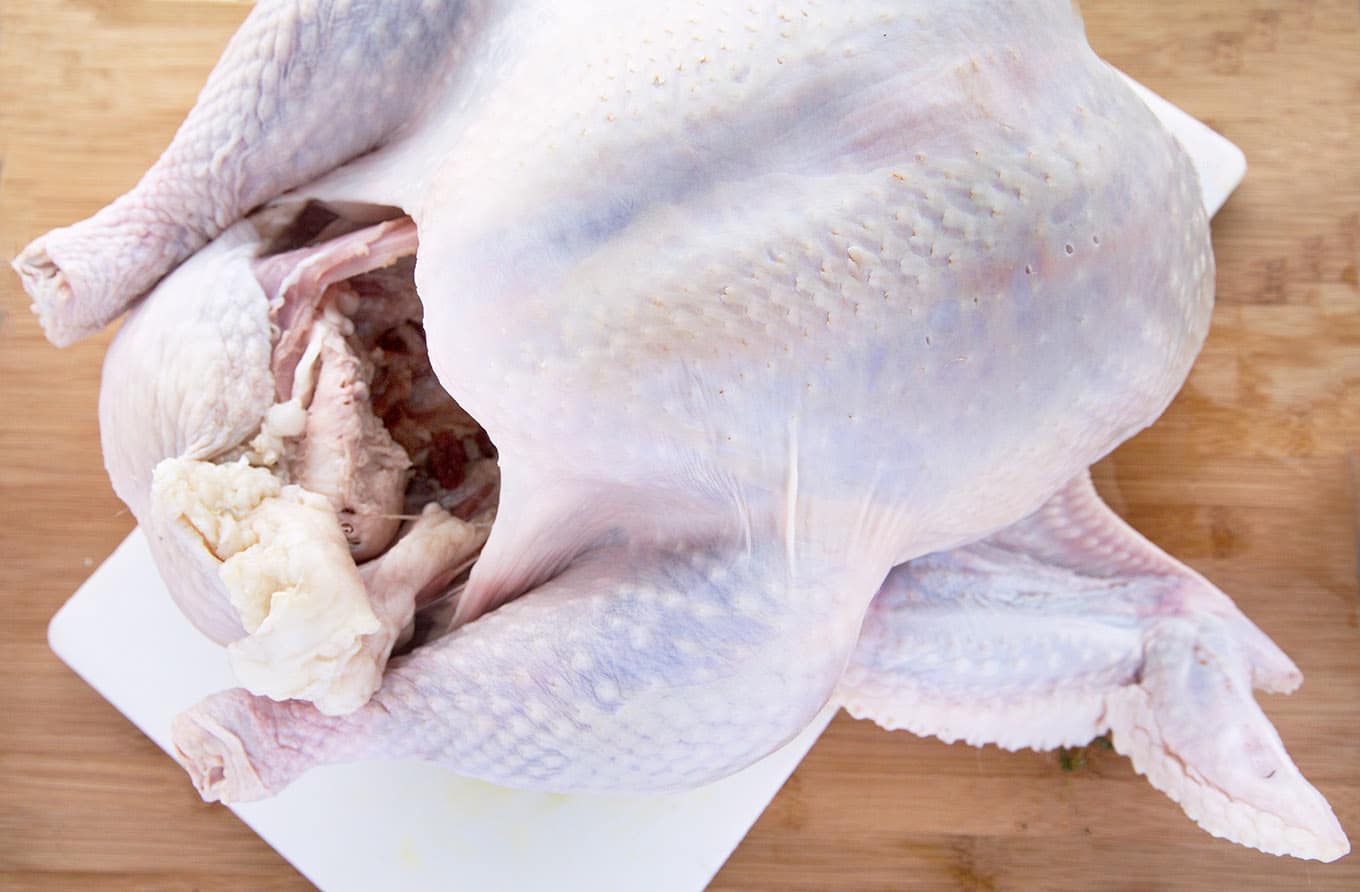
Rule #1 of Dry Brining
The larger the piece of meat, the more time is needed for the brine to be effective.
A dry brine, also called pre-salting, involves rubbing the salt, seasonings, and/or sugar directly onto the meat and skin and then letting the meat rest in the refrigerator for a period of time before cooking. During the process of dry brining, the salt draws out the juices through osmosis.
As the salt dissolves into the juices, it begins turning into a natural brine without any added liquid. This Natural brine is then reabsorbed into the meat and starts breaking down the tough muscle proteins. That is why this process needs up to 3 days to complete.
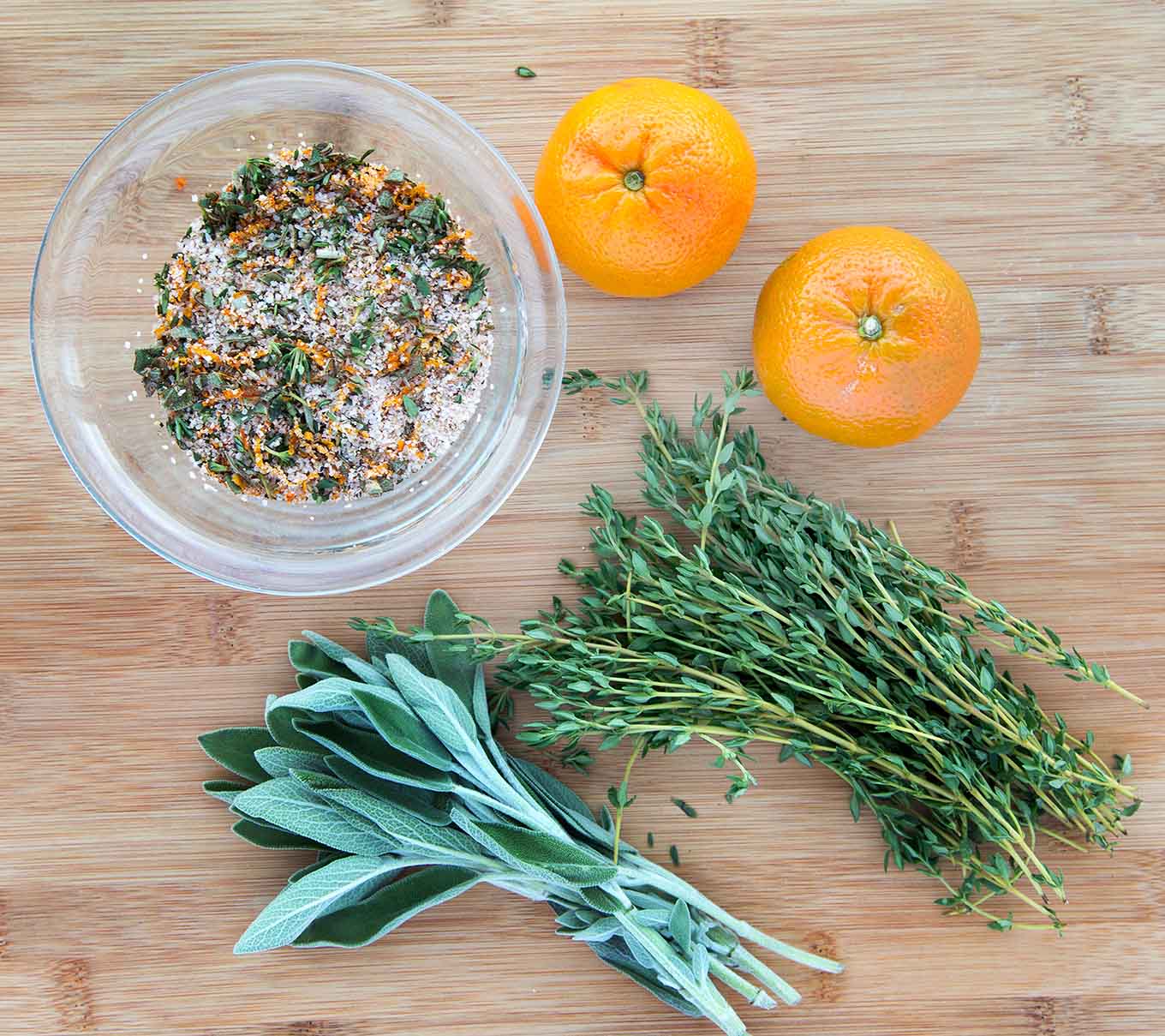
How to thaw a frozen turkey
The best way to thaw your turkey in the refrigerator in its original packaging. General defrosting times are 24 hours for every 4 pounds of Turkey.
If you have no choice and must thaw your turkey quickly, fill the kitchen sink with cold water and put the turkey in it, breast side down.
Make sure to completely submerge the turkey in water (in its original packaging) for the quick thaw method. Make sure to change the water every 30 minutes. This defrosting method will take 30 to 40 minutes per pound of turkey.
*When finished thawing the turkey, make sure to clean and disinfect the sink, spigots, and all surrounding surfaces.
*Don’t leave the turkey out to thaw on the countertop.
Chef Tips
- Don’t buy a preseasoned or kosher turkey (pre-salted) or self-basting turkeys. I always look for free-roaming or a heritage bird. But most importantly, no added salt.
- Make sure your turkey is thawed if you buy a frozen turkey. *Buy your turkey early enough so that it’s thawed and ready to brine on the Monday before Thanksgiving.
- It doesn’t have to be a whole turkey; you can dry brine a turkey breast.
- Getting under the skin of the turkey and applying the brine directly to the meat will make a tastier, moister turkey. If you’re only going to brine the skin, try and brine it for the full 72 hours.
- Don’t rush dry brining. To enjoy the best turkey you’ll ever have, you need to give it enough time to be effective. 2 days is the minimum, and can go as long as four days if you’re working with a 20-pound plus bird. *Any length of time you can brine the turkey is better than not brining the bird.
- You can use any herbs that you like, but the salt really does matter. Use Morton’s Kosher Salt for the best results. Diamond Kosher salt is a larger grain; if you use Diamond, increase the amount of salt by half. Don’t use table salt, it’s too fine and will make the turkey too salty.
- If you don’t have Kosher Salt, you can use Coarse Sea Salt or Coarse Himalayan Pink Salt because of the size of the coarse grains.
*The standard is one tablespoon of salt for every 5 pounds of turkey, but I like to go a little below that at one tablespoon of salt for every 6 lbs. So if you’re turkey is smaller, adjust the amount of salt and herbs.
Does it Matter Where I Apply the Mixture?
It does make a difference where you apply the dry brine. Separating the skin from the meat so that some of the dry brine can be rubbed directly on top of the meat (below the skin) will give you the best results.
If you apply the brine directly on the skin, it will need more time to penetrate the skin and get to the meat. The breast will also get more of the dry brine than the rest of the turkey. The turkey breast has the largest amount of meat on a conventional turkey.
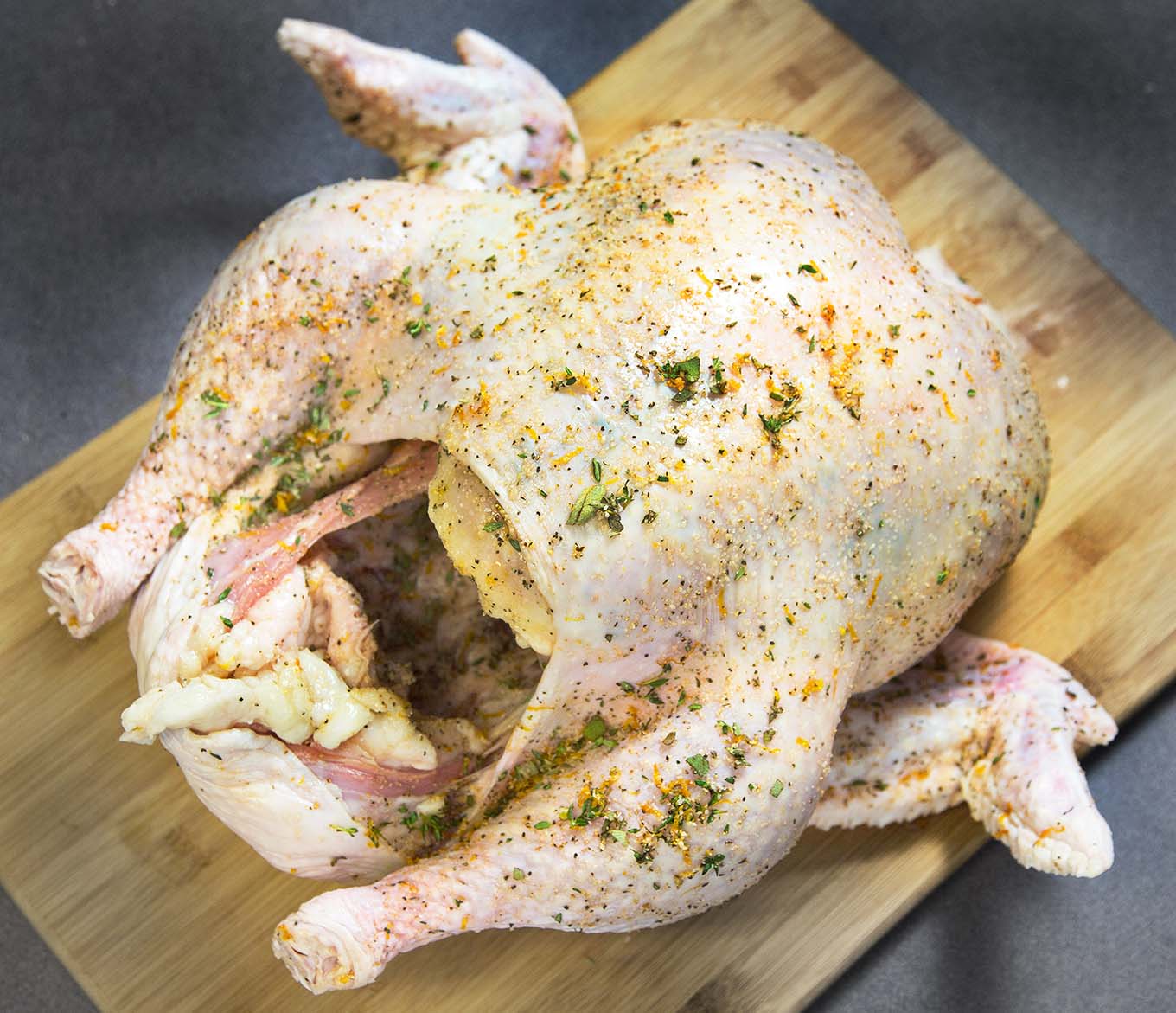
- After applying the dry brine, place the turkey breast side up in a roasting pan. Cover the turkey securely using plastic wrap. Or place it into a small plastic bag and seal it, removing as much of the air as possible. Refrigerate for 48 – 60 hours.
- Remove the plastic wrap and keep it refrigerated uncovered for the last 12 hours of brining. This will help crisp the turkey skin.
Can I use Dry Herbs?
Yes, you can, although I prefer fresh herbs. You can find them at most grocery stores in convenient little plastic containers. If fresh herbs are not available, by all means, use dry herbs. You can also add any other herbs or aromatics that you like.
Should I cook a Heritage Turkey Differently?
A heritage turkey is more elongated with drumsticks that are a good 1 to 2 inches longer than a modern bird, extending well beyond the tip of the breast.
Because of its more elongated shape, a heritage turkey cooks a little more quickly than a conventional turkey, so the biggest danger is overcooking. To make sure your Heritage Turkey is not overcooked, follow my recipe and change the cooking times.
Roast an unstuffed turkey at 425° for 20 minutes, then turn down the temperature to 325°F until the internal temperature of the thigh meat reaches 155°F.
Cooking 15-20 minutes per pound for the total cooking time. That being said, I would start checking the internal temperature 2 hours after the second phase of the process using an Insta-read thermometer in the thigh.
Also, make sure to allow 1-½ lb. per person compared to about one lb. for a conventional turkey. As an example, expect a 12-lb. heritage turkey to feed about eight people. Also, keep in mind that you’ll have as much dark meat as light meat. A conventional turkey will have more white meat.
Chef Tips for Roasting
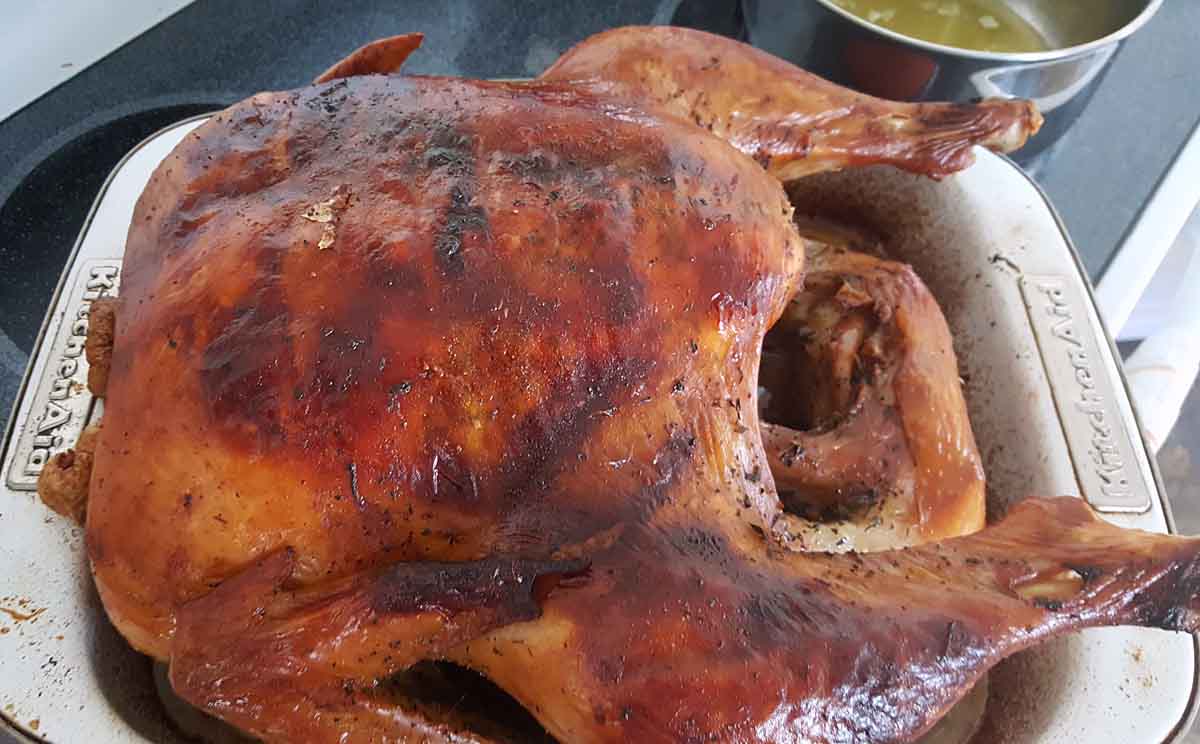
- Set your oven rack in the bottom third of the oven.
- Let the turkey sit out of refrigeration for about 30 minutes so it can come to room temperature before roasting.
- Allow the turkey to sit at room temperature for one hour before roasting. **Do Not Rinse The Brine Off Turkey
- Start off roasting the turkey at 425°F, and roast upside down for the first 45 minutes. At the end of that time, very carefully turn the turkey over with the breast side up to continue cooking.
- You’ll find that some ovens have cold spots. This is why it’s a good idea to rotate the turkey halfway through and baste for even cooking and browning. Keep some turkey or chicken stock handy in case your turkey doesn’t produce enough juice during the roasting process, and use that for basting if necessary.
- Always use an instant-read thermometer to ensure that your turkey has been cooked properly. Insert the thermometer into the thickest part of a thigh without touching the bone registers. Your turkey will be done when the thermometer reaches 165°F. It will continue to cook once you remove it from the oven, increasing by another 10 degrees.
- Let the turkey rest for 20-30 minutes before carving.
I absolutely love my Meater Plus | Smart Meat Thermometer. It takes all the guesswork out of cooking meats in the oven, on the grill, or in a smoker.
Do I have to start the turkey upside down?
No, you don’t. Safety should always come first and if you don’t think you can flip the turkey safely, skip that step. Still use the instruction for roasting starting at 425 degrees, then lowering to 325 degrees.
**If you do flip the turkey, take the pan out of the oven first. Don’t attempt this while the pan is in the oven.
You might also find heat-resistant gloves a good option. They’ll come in handy throughout the year.
Can I still Dry-Brine a Self-Basting or Kosher Turkey?
No, you can’t. That will make the turkey too salty! What you can do, is leave the salt out of the dry-brine ingredients and use the remainder of the seasonings as a dry rub. Feel free to add in your favorite spices.
Apply the dry rub for 24-36 hours and follow the roasting instructions.
My Turkey has been injected with a saline solution can I still use a dry brine?
While it’s not a good idea to add more salt to an injected turkey, you can still use the dry brine method. If your turkey is in the 15-pound range cut the Kosher Salt down to 1 Tablespoon. If your turkey is under 15 pounds reduce the salt accordingly. You can use the rest of the ingredients as stated in the recipe.
Why shouldn’t I stuff my turkey?
I know that the stuffing from inside the turkey is the best you’ll ever have. But it’s not a practice I recommend for two very important reasons.
The stuffing sucks a lot of the moisture (and flavor) out of the turkey. That’s why a stuffed turkey is often dry and overcooked. And the really bad news is, it puts us at risk for foodborne illness.
The longer it takes the turkey to reach an internal temperature of 165 degrees gives bacteria more time to multiply. And that means that uncle Sal (salmonella) might be paying you and your guests an unexpected holiday visit, which will definitely put a damper on the festivities.
**Stuffed turkeys also take longer to cook.
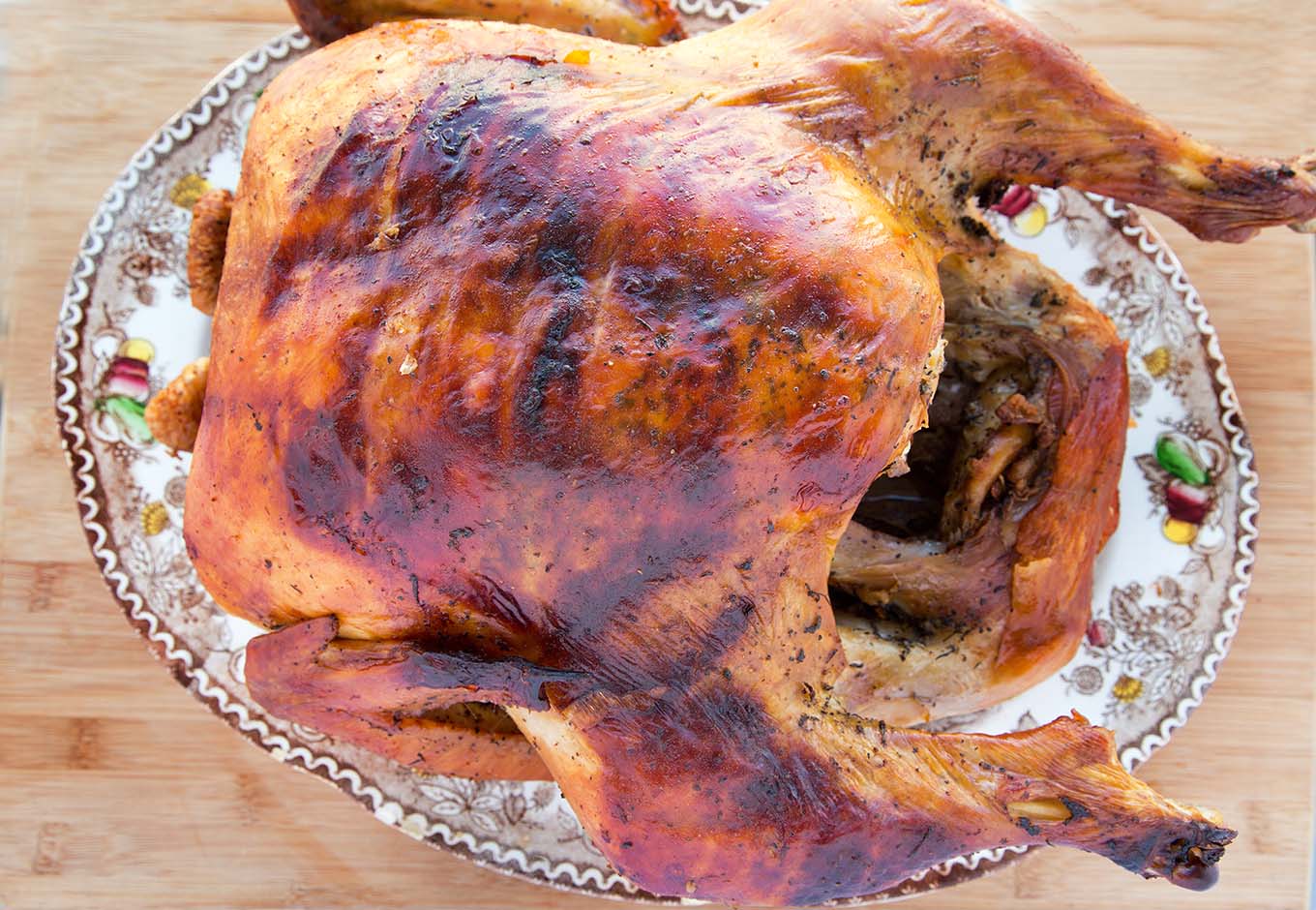
If you have leftover turkey, try my Old Fashioned Turkey Croquettes.
If you’re looking for a new Chef Knife, check out Misen. I’ve been using their kitchen knives for years!
Recipe FAQs
Dry-brining, also referred to as salting, is the process of rubbing the meat down with salt. The natural moisture content of the meat creates a concentrated brine that is naturally absorbed back into the meat before cooking.
A whole turkey needs two to three days of brining time. The dry-brining can be done days before Thanksgiving, giving you extra time on Turkey Day.
For the last 24 hours of the dry brine, leave the turkey uncovered in the refrigerator. This will dry out the skin, which in turn gives you incredibly crispy, golden-brown skin on the finished turkey.

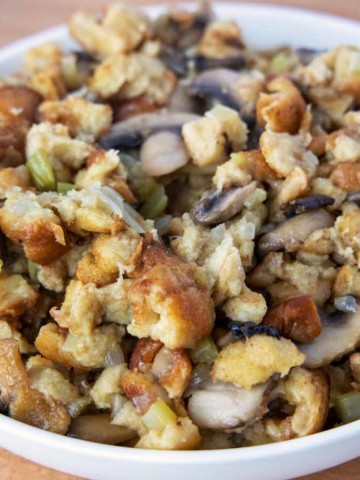
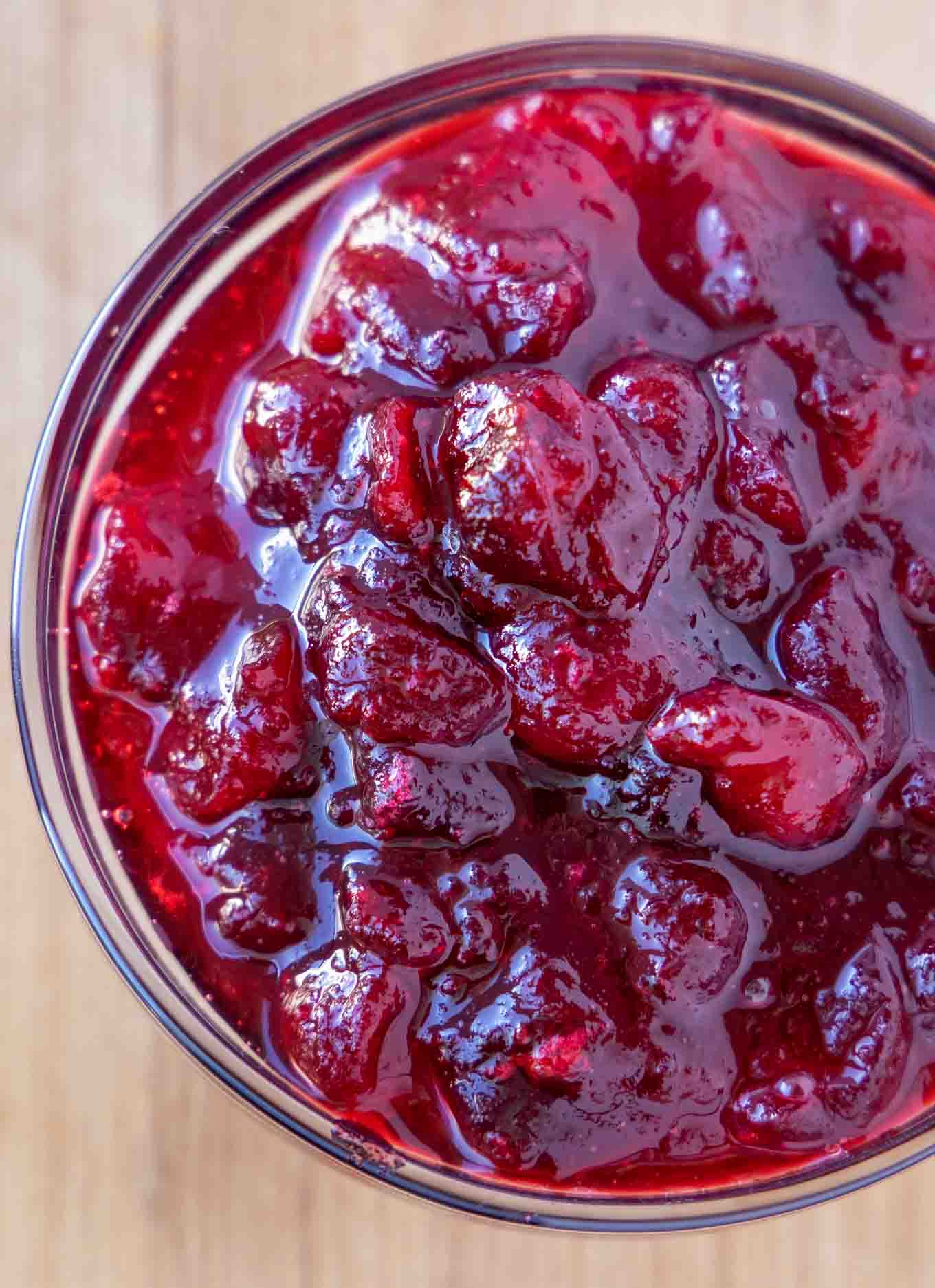
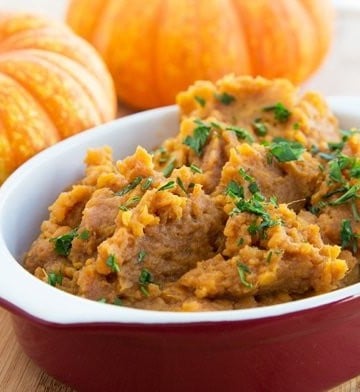
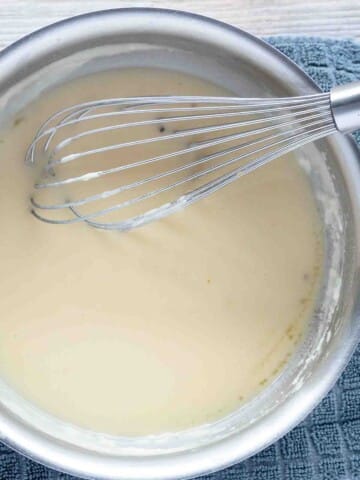
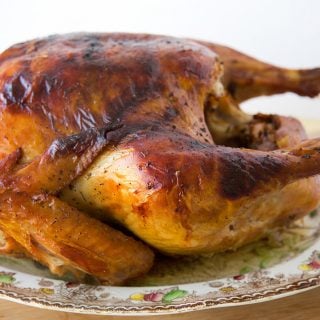
Barbara Ebeling says
Chef Dennis,
I plan on dry bringing my 20 pound fresh Butterball turkey. However, I want to stuff the turkey with seasoned bread stuffing..Would anything with the dry brine change, and how long would it roast..I always cook it breast side down for the first half of the roasting time and then flip it . Last year I did a wet brine and cooked it too long…It fell apart.
Please advise.
Thank you
Chef Dennis Littley says
hi Barbara
although I love how stuffing tastes when cooked inside a turkey I stopped doing that years ago. The reason being the stuffing sucks the juice out of the turkey as its cooking giving it more of a chance at drying out. But most importantly to ensure that its safe to eat the stuffing has to reach 160 degrees. If you let it cook till the stuffing is at that temp, the breast will be well over 170 which means its going to be dry.
I would suggest not stuffing it. But if you do, make sure to use an oven thermometer to check the internal temp of the stuffing so its at least 160 when you take it out of the oven. Also remember that the turkey will continue to cook once removed from the oven, so the temp of the meat will continue to rise with more of a chance for overcooking.
Darlene says
Hi Dennis. I’m excited to Try this method. I usually use a wet brine. I’m curious if I need to cover the bird with foil the hour it is resting before slicing. I know sometimes covering can cause steam, resulting in a soggy skin.
Chef Dennis Littley says
hi Darlene – if you want the skin to stay crispy I would not use the foil. The turkey itself does not have to be super hot, just make sure the gravy is.
Darlene says
Thank you. Happy Thanksgiving to you and yours.
Chef Dennis Littley says
thank you Darlene!
Have a healthy and Happy Thanksgiving!
Ken Cameon says
Looking forward to trying this dry brine
Kris says
Chef, I am excited to try your recipe, in fact I have begun the thawing process for my 20# Turkey. Unfortunately, it is injected with sodium and what not. Please tell me there is a way to modify the recipe.
Chef Dennis Littley says
hi Chris
I would be worried that the dry brine as is would make the finished product too salty. That doesn’t mean you can’t brine it, you just need to cut back the salt (1 Tbsp) and increase some of the herbs. You can still let it dry out so you have a crisp skin and you can still use the roasting methods and other tips that I have listed.
You want to have a flavorful and moist bird and the tips I share will help ensure that it comes that way. Brining is great for adding moisture and flavor but an injected bird is basically pre-brined, so we want to concentrate on the flavor and cooking technique more.
I hope this helps
Dennis
Ms. C. says
This is my first time making turkey. The size of my turkey will be between 8-12lbs what would you recommend that I reduce the ingredients to brine to? Would I still use 3tbsp of kosher salt or would I reduce this down to 1? With brining is it still necessary to inject the turkey to get more flavor inside the turkey?
Chef Dennis Littley says
I would cut the recipe in half for that size turkey
Susana says
I have requested a deboned, whole turkey (breast and thighs in a net), and wanted to use a dry brine to roast it. The thing is that it doesn’t have any skin, so I don’t know whether I should leave it uncovered for the last day since there is no skin to crisp. Can I simply keep it covered the whole time up to putting it in the oven?
Thank you SO much! 🙂
Susana
Chef Dennis Littley says
hi Susana
I would be really worried that the breast is going to seriously dry out. I might opt for a wet brine in the case of skinless turkey. This is not something I’ve ever done, and after questioning a few of my chef friends the came to the same conclusions I did.
Sorry I can’t be of more help with this.
Susana says
Thank you! I might do that then. I was only thinking that it could work, since I was thinking of it as if I were dry brining a cutlet or something smaller, and keeping it in a bag to retain the moisture, but it may not work, so I guess I’ll try the wet brine instead.
Dave Manley says
Are the carrots, onion, garlic and celery all used as part of the brine mix? (I thought dry brines were only dry/powder ingredients) Do you shove them under the skin? (looking to confirm before Christmas dinner) Thanks!
Chef Dennis Littley says
The instructions read:
In the bottom of your roasting pan add roughly cut celery, onions, garlic and carrots. Include the skin from the onion and carrots. Add 1 cup of chicken stock or water to the pan.
Eufemia says
I just tried this and DELICOUS but here are my questions/issues: I rinsed before roasting as I felt it would be too salty otherwise — it was great! So why do you not recommend rinsing? My issue: I did only a turkey breast (w/ribs) and there were NO drippings in the pan! The vegetables were EXTREMELY salty so could not be eaten. Thoughts? Thank you for sharing!
Chef Dennis Littley says
As far as rinsing the bird off, you definitely can. Or you can just wipe it down with a few paper towels to remove any excess salt. Personally, I didn’t do any of that. I just left it all on there and cooked it as is. Most of the salt is in the meat anyway at this point so you’re just washing off herbs and flavors. You can do it though if you are worried that you used too much rub. It won’t hurt the brining process to rinse it off but it will affect the skin which has dried out during the last part of the process. If you rinse it it will not be as crispy.
As for the drippings, without the fat and bones you won’t have a lot of drippings. Try adding in some chicken broth or water in the pan to help collect what drippings there would be, otherwise they will just evaporate.. As for the veggies in the pan, I never eat them they just add to the flavoring of the drippings.
Thanks for stopping by and Happy Thanksgiving!
Randy says
I followed you recipe and bribed Sunday night, cooking the 15 lb bird right now, looks beautiful, can’t wait to eat!
Chef Dennis Littley says
I hope everyone enjoyed the turkey! Happy Thanksgiving!
Oscar maloney says
Am a west Indian. Barbadian to be exact. I do most of the cooking at home. But never dry brine.
Your instructions were very helpful .
Now I can save some time in the kitchen and still have a great meal. THANKS.
Chef Dennis Littley says
I hope you enjoy the turkey as much as we did Oscar! Thanks so much for your comment.
patricia phillips says
I’ve never dry brined
but really looking forward to it!
my hands are bad as I am old so I hope I can pull skin back from breast.
Would you email this recipe bc it took so long to find.
I will start the dry brine tomorrow for 14.5 lb turkey.
thank you
Chef Dennis Littley says
Hi Patricia
please follow this link for the recipe https://www.askchefdennis.com/dry-brine-roast-turkey/
Happy Thanksgiving!
Garey Mckee says
This is probably the next best thing to Dennis coming to my house and roasting the bird for me! I can dream, can’t I?
Gabriella says
Your turkey looks amazing! Are the pan drippings too salty to make a gravy with? Do you have any gravy making tips?
Chef Dennis Littley says
Hi Gabriella
thanks so much for stopping by! As to your questions the drippings I used were not too salty, although I will admit to being quite thirsty after dinner. To cut back on the salt make a heavier roux for the gravy and cut it back with either water, wine and honey or low sodium chicken stock. The drippings will be a good start to the gravy and leave some room for added flavors. using butter instead of the fat for the roux might also help to cut back on the salt. You could always save the fat for a turkey noodle soup
Happy Thanksgiving
Dennis
Yvonne Stultz says
Holliday Greetings Chef Dennis, thanks for that recipe for my Thanksgiving dinner, I follow your instruction, and started the process last night. I can’t wait to see the out come and to tasted my turkey. Thanks again.
Chef Dennis Littley says
Thanks for letting me know Yvonne, Please let me know how it turns out! Happy Thanksgiving
Bob The Builder says
Hi Dennis, I bet it would be great on roasted chicken too. I like your combination of aromatics and spices. Smoked paprika is a great spice and would build the flavor even more. I’m guessing other paprikas could work if one didn’t have the smoked paprika.
Your recipe comes to us in a timely manner. Thank you very much. It is greatly appreciated.
BobTheBuilder
Chef Dennis Littley says
Bob it certainly would be good on chicken! Chicken would also be a good place to experiment with different seasonings in this rub. Just make sure to seriously cut down the salt (1 tbsp per 5 lbs) since most chickens are relatively small.
Kim | a little lunch says
Thanks for this, Dennis! Looking forward to “playing” with your ideas for a VERY flavorful Thanksgiving dinner. 🙂 Just printed off your whole post… good times!
Chef Dennis Littley says
you’re very welcome Kim, and thank you for stopping by. I hope you like the turkey as much as we did
liz nolan-greven says
what is the recommended roasting time for a large turkey? We just butchered our first home grown turkey and he is quite big…a little over 34 lbs. I am worried about it getting dried out but will use your method here…however, I don’t want to cook for more than 10 hours! what do you think? Thanks very much. Liz
Chef Dennis Littley says
hi Liz
The recommended time is 10 to 15 minutes per pound for fresh turkeys. I would suggest getting a meat thermometer and check the internal temperature of the turkey. It should be 165 degrees
Terri Lane says
Hi Chef, love the recipe and going to try it this year… One question, can I still inject the bird with butter or not?
Chef Dennis Littley says
I’ve never tried it Terri, but I don’t see why you can’t